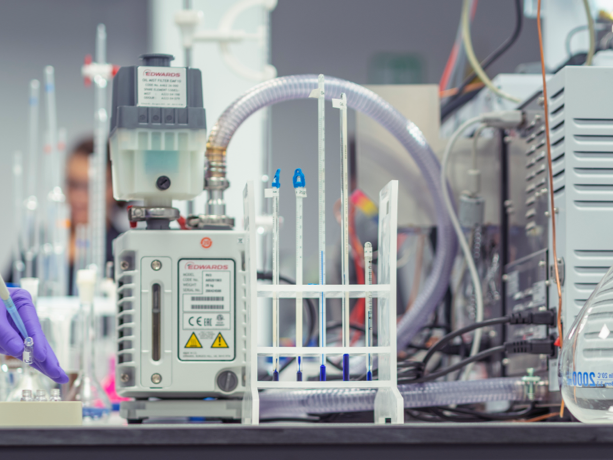Carbon-Negative Concrete Developed by Researchers

Thanks to its combination of high strength and relatively low cost, concrete is one of the world’s most popular building materials. However, it’s also a major source of carbon emissions; which poses a significant challenge in the fight against climate change. However, a team of researchers from Washington State University (WSU) may have found a solution…
The environmental impact of concrete
Look around you, and you can probably spot at least one thing that’s made from concrete.
From entire buildings to roadways and parking lots, concrete is ubiquitous and one of the world’s most important and popular building materials.
Modern life as we know it wouldn’t be possible without concrete. However, according to environmentalists, the continued production of concrete could lead to the end of modern life as we know it, too.
That’s because of the frankly titanic volume of carbon emissions that are associated with concrete production.
At the time of writing, concrete production (across all stages of production) produces approximately 2.8 billion tonnes of carbon dioxide each year. That’s about 8% of the world’s entire carbon dioxide emissions.
Why is concrete production so carbon intensive? The answer has two parts:
- The process of making cement requires very high temperatures (as much as 1,500ºC is not unheard of). These temperatures are generally achieved by burning CO2-intensive fuels.
- The chemical reactions involved in obtaining limestone (which is a key ingredient in concrete) are also incredibly carbon-intensive.
With global demand for concrete unlikely to abate any time soon, there’s a considerable incentive to develop lower-carbon ways of producing concrete.
The researchers at Washington State University (WSU) claim they’ve achieved exactly that; a lower carbon way of producing concrete.
Biochar: the future of eco-friendly concrete?
Previous attempts to develop lower-carbon concrete have focused on substituting ingredients within concrete for lower-impact alternatives.
For example, one team of researchers is exploring using algae-grown limestone instead of traditionally-sourced limestone as a means of reducing the carbon emissions associated with concrete.
The team at WSU are following a similar path, using biochar - a type of charcoal made from organic waste - as an eco-friendly way to reduce the amount of limestone needed in concrete.
However, the substitution was not without its challenges.
The addition of only small amounts of biochar (e.g. up to 3%) to concrete, resulted in the strength of the concrete being drastically reduced.
Going back to the drawing board, the WSU researchers found a solution. By first treating the biochar in concrete washout wastewater (which itself is a by-product of concrete production), they were able to add up to 30% biochar to concrete without compromising strength.
When tested, the researchers found that the biochar-infused concrete was able to reach a compressive strength after 28 days that is comparable to ordinary cement, of about 4,000 pounds per square inch.
Even better, the team found that as the biochar-infused concrete was curing during that 28-day period, it was able to suck up 23% of its weight in carbon dioxide from the air (whilst still being as strong as regular concrete!).
What’s more, the team of researchers suggests that the biochar-infused concrete would go on sequestering carbon dioxide for the lifetime of the concrete (typically between 30 and 75 years).
In short, the dream of carbon-negative concrete is on the verge of becoming a reality.
What next?
Like many new ‘green’ breakthroughs, the real challenge comes in scaling and commercialisation.
Is it possible to produce biochar-infused concrete at the necessary volumes and to do so profitably?
It looks like we’re about to find out. Aided by a grant from the Washington Research Foundation - which will be used to investigate different use cases for the concrete - the team is currently seeking industry partners to scale up production for field demonstrations.
In need of materials testing support?
Do you need assistance in identifying the composition of a material? Then The Lab can help.
Our materials scientists are experienced in all aspects of materials testing and analysis and - combined with our extensive range of laboratory equipment - can find you the answers you need.
Find out more about The Lab’s materials testing services now
For more materials science, materials testing and inspection insights and news, explore The Lab’s News and Knowledge Hub…
Has the Secret of ‘Self-Healing’ Roman Concrete Been Revealed? | Researchers Develop ‘Pigment Free’ Paint | New 3D Printing Technique Developed to Print One of the World’s Toughest Steels
- Author
- Dr Holly Edwards
- Date
- 25/04/2023
